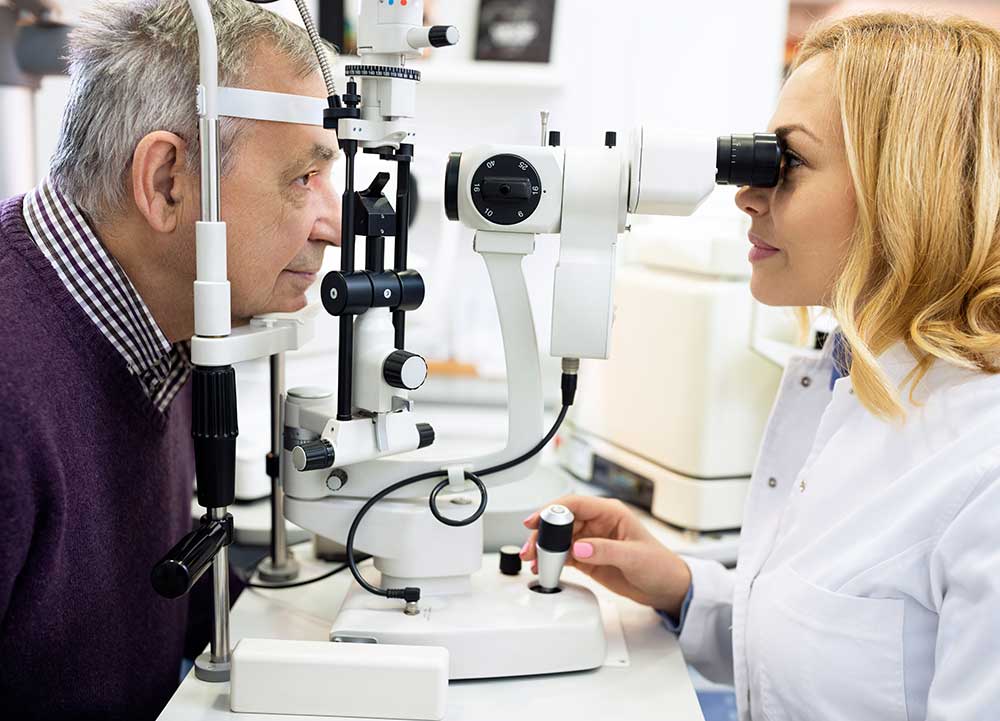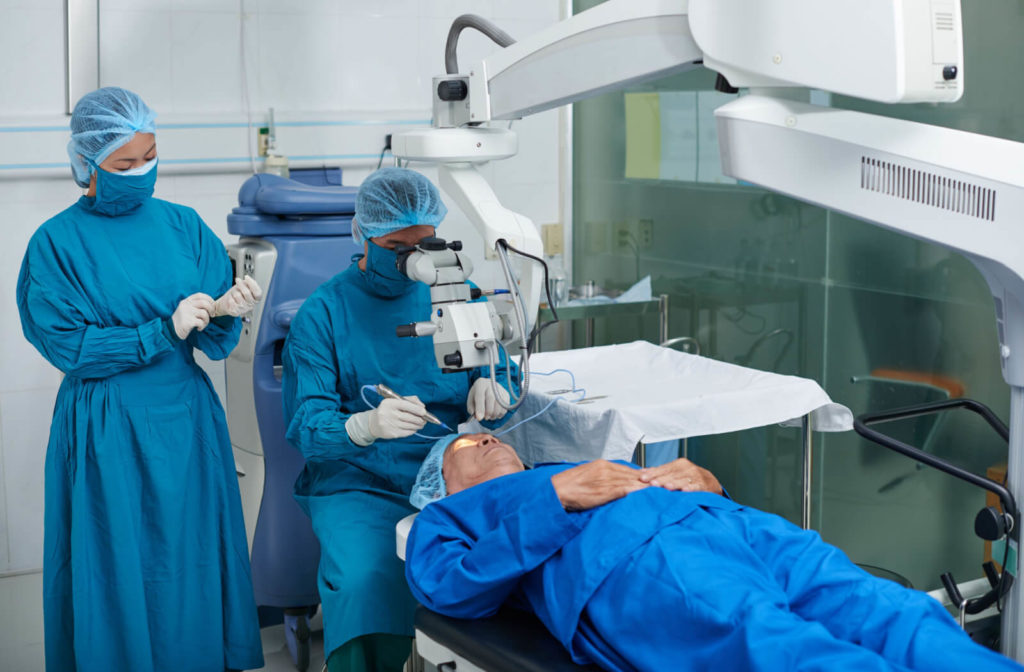The Importance of Regular Check-Ups with an Eye Doctor Optometrist
The Importance of Regular Check-Ups with an Eye Doctor Optometrist
Blog Article
Exploring the most recent Technological Developments in Optometry and What They Mean for Optometrists
In the ever-evolving area of optometry, current technological advancements are reshaping just how experts come close to eye care. From the accuracy of Optical Comprehensibility Tomography to the nuanced understandings used by AI-driven diagnostic tools, these developments are setting brand-new criteria in client evaluation and treatment. Teleoptometry is positioned to redefine availability, ensuring that competence transcends geographical limitations. As these innovations permeate the method, eye doctors are confronted with the obstacle of embracing these devices to boost individual results. Yet, the concern remains: exactly how will these technical changes redefine the roles and obligations within the career?
Advancements in Diagnostic Devices
Progressing the area of optometry, technologies in analysis tools have reinvented the way eye treatment specialists evaluate and diagnose visual impairments and ocular conditions. The past years has actually witnessed significant technological advancements, allowing even more thorough and exact analyses. Optical Comprehensibility Tomography (OCT), as an example, supplies high-resolution cross-sectional pictures of the retina, permitting the early detection of conditions such as glaucoma and age-related macular deterioration. This non-invasive imaging method has become essential in contemporary optometric practice.
One more trick development is the intro of sophisticated corneal topography systems, which map the surface area curvature of the cornea with precision. These devices are particularly valuable for fitting get in touch with lenses and identifying corneal problems. Moreover, electronic retinal imaging has transformed typical ophthalmoscopy, providing thorough, panoramic views of the retina that promote comprehensive aesthetic examinations.
The advancement of wavefront aberrometry has actually also been vital, enabling the evaluation of refractive errors with unparalleled accuracy (Eye Doctor). This modern technology assists in customizing restorative lenses and improving medical outcomes for refractive surgeries. Collectively, these analysis developments encourage eye doctors to provide superior patient care, making certain early intervention and tailored therapy approaches, ultimately enhancing visual health and wellness results
AI in Individual Monitoring
Structure on the foundation of innovative diagnostic tools, the incorporation of artificial intelligence (AI) in client administration represents a transformative jump for optometry. AI systems are progressively employed to boost performance, precision, and customization in individual treatment. By examining huge quantities of information, AI can recognize patterns and forecast possible eye problems, allowing eye doctors to tailor interventions better. This ability is vital in managing persistent eye conditions such as glaucoma and diabetic retinopathy, where early discovery and continual tracking are essential.
Additionally, AI-driven platforms help with structured individual interactions and management procedures. Automated organizing, online examinations, and individualized follow-up strategies not only enhance client satisfaction but additionally maximize time monitoring for experts. These systems can triage patients based upon the necessity of their conditions, guaranteeing that those in vital demand obtain timely focus.
Moreover, AI improves decision-making by offering eye doctors with evidence-based recommendations and treatment paths. By incorporating data from electronic health and wellness records, AI tools use understandings that notify medical choices, decreasing the risk of mistakes and enhancing client outcomes. As AI remains to advance, its duty in person administration will likely broaden, improving the landscape of optometric care.
Advancements in Retinal Imaging
In the world of optometry, retinal imaging has witnessed exceptional technical innovations that are enhancing analysis abilities and client care. Innovations such as Optical Comprehensibility Tomography (OCT) and fundus photography have changed how optometrists picture and analyze see this here the retina.
Boosted imaging methods like OCT angiography are more refining diagnostic precision. Opticore Optometry. Such developments help with the identification of min retinal adjustments that could represent condition progression.
Additionally, improvements in man-made intelligence are boosting retinal imaging by enabling automatic evaluation of big datasets. These systems assist optometrists in determining patterns a measure of pathology, thereby improving diagnostic accuracy and performance. Collectively, these advancements are changing retinal imaging into a foundation of modern-day eye care, improving results and expanding restorative opportunities.
Teleoptometry's Growing Duty
Teleoptometry is progressively becoming an essential component of eye treatment, driven by developments in data and analysis tools. As optometry welcomes electronic makeover, teleoptometry helps with remote examinations, enabling optometrists to prolong their services beyond traditional boundaries. This is particularly beneficial in country and underserved locations where access to specialized eye treatment is usually restricted. By leveraging high-resolution video conferencing and advanced retinal imaging, optometrists can conduct comprehensive eye exams from afar, ensuring prompt medical diagnosis and therapy.
The combination of fabricated intelligence (AI) further enhances teleoptometry, enabling the analysis of visual information and aiding in the discovery of eye problems such as glaucoma and diabetic person retinopathy. AI-powered formulas can swiftly translate complex imaging information, providing eye doctors with useful insights that strengthen scientific decision-making.
Furthermore, teleoptometry supports connection of care through smooth combination with electronic wellness records (EHRs), permitting optometrists to keep extensive patient backgrounds. When seeking advice from with various specialists., this makes certain that clients get regular and customized care also.
Despite these benefits, obstacles stay, consisting of making sure data safety and security and taking care of patient expectations. However, teleoptometry represents a substantial stride towards more easily accessible, reliable, and patient-centered eye treatment. As modern technology evolves, its function is poised to broaden better.

Future Trends in Eye Care
A myriad of ingenious patterns is established to improve the future of eye treatment, driven by technological improvements and the evolving requirements of individuals. One special info substantial fad is the integration of expert system (AI) in diagnostics, which guarantees to enhance the precision and effectiveness of eye exams. AI formulas can examine large amounts of data from retinal photos, possibly detecting problems like diabetic retinopathy and glaucoma earlier than traditional methods.
Moreover, personalized medication is getting traction in optometry, with genetic screening notifying personalized treatment strategies. This strategy intends to enhance patient end results by tailoring treatments to private genetic accounts. Wearable modern technology, such as wise get in touch with lenses, is also coming up, providing real-time monitoring of intraocular stress or glucose levels, hence supplying constant insights right into ocular from this source and systemic health and wellness.
The adoption of augmented fact (AR) and digital truth (VR) in training and client education is an additional emerging fad. These modern technologies use immersive experiences that can improve understanding and skills both for people and eye doctors. As these trends advance, optometrists must remain abreast of technological developments to provide sophisticated care, making certain improved person outcomes and contentment in the dynamic landscape of eye treatment.
Final Thought

Jointly, these diagnostic innovations empower eye doctors to provide exceptional patient treatment, making sure early treatment and tailored therapy methods, ultimately improving aesthetic health end results.

As these modern technologies continue to advance, optometrists have to adapt and include them into method, ultimately enhancing operations efficiency and raising the criterion of eye care provided to people.
Report this page